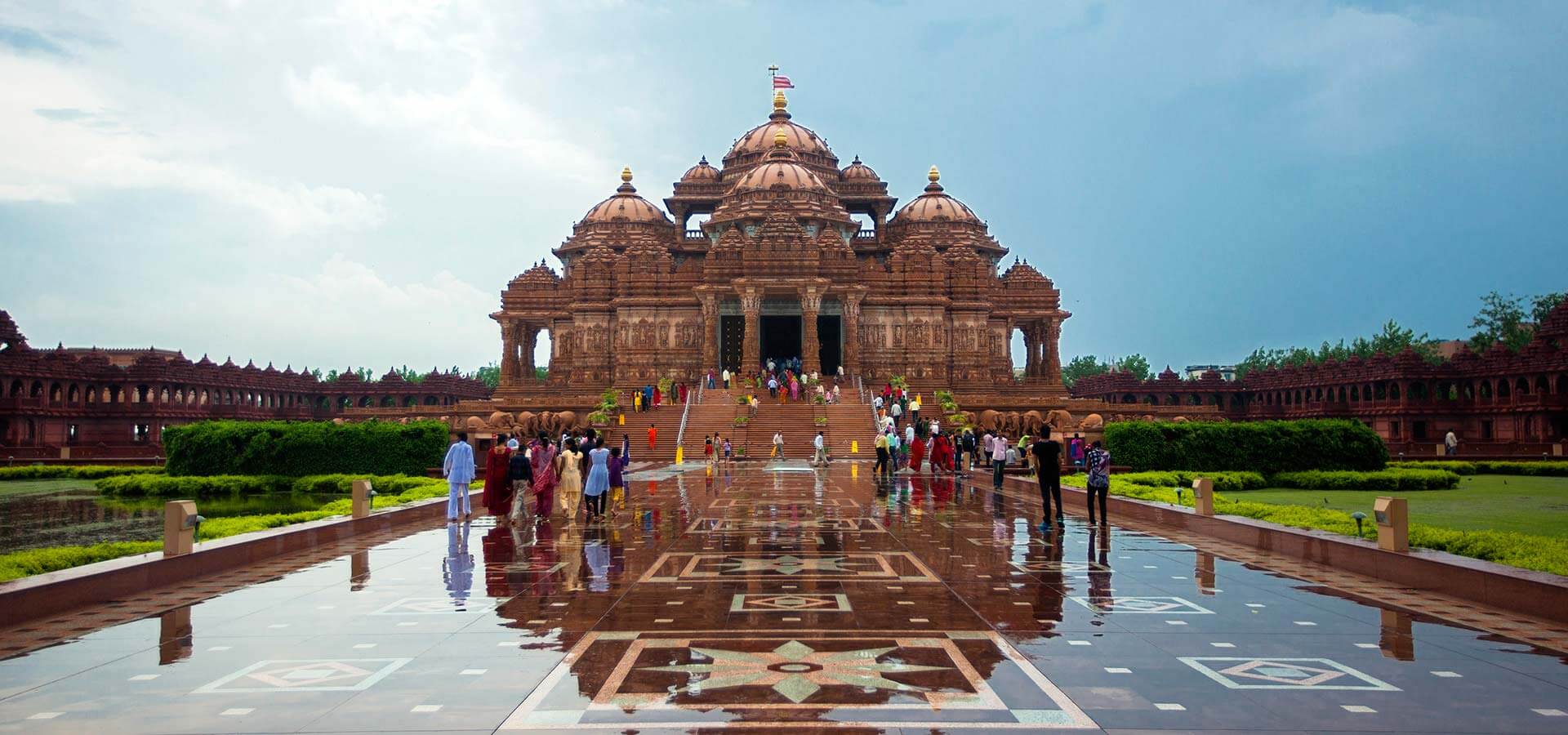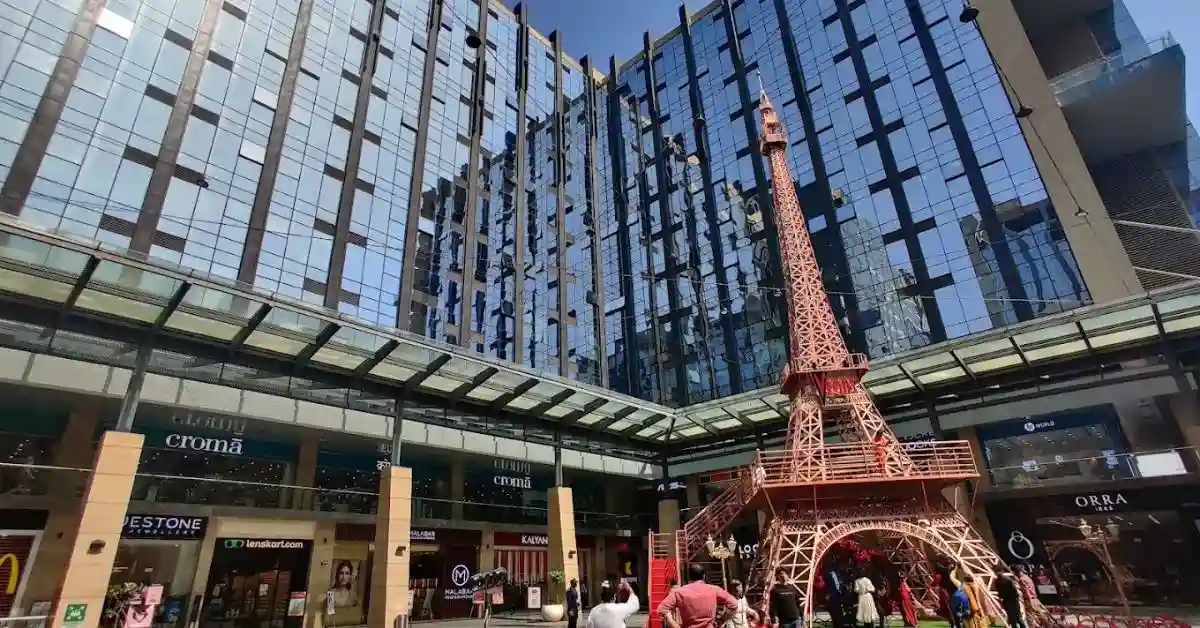About Red Fort/Lal Qila
Red fort, popularly known as Lal Qila is a historical landmark oplocated in Chandni Chowk, Delhi. Red Fort was originally known as ‘Qila-I-Mubarak’ which means a residence for a royal family. It was built by the Mughal Emperor Shah Jahan in the mid 17th century. The red fort is spread over an area of 255 acres and comprises many buildings which are adorned with intricate carvings, floral motifs, double domes and a defence wall of 2.5 Km.
Lal Qila holds a great cultural and historical significance in the country and stands as a symbol of national pride, representing the rich heritage of India. It is also a UNESCO World heritage site. Lal Qila is also a popular place for shooting films and music videos.
There are a wide range of experiences for visitors to the fort complex. There are bustling bazaars and markets which offer a delightful selection of traditional crafts, textiles and souvenirs. There are also museums and exhibitions where visitors can see various artefacts and artworks and get the insight of the region’s history and artistic traditions. There is also a guided tour of the fort for the visitors which will provide them detailed information about the fort’s history, architecture and cultural significance.
History & Architecture Of Red Fort/Lal Qila
The Lal Qila has a rich and captivating history spanning several centuries. It was commissioned by the Mughal Emperor Shah Jahan who has also build Taj Mahal, an Architectural Marvel. The construction of the Red Fort began in 1638 and took 10 years to complete. The fort was designed by Architect Ustad Ahmad Lahauri who combined various architectural styles including persian, Timurid and Indian influences. The main material used in its construction was red sandstone, which gives the fort its distinctive appearance and name.
The Lal Qila served as the main residence of the Mughal Emperors for around two centuries and witnessed the glory and grandeur of the Mughal Empire during its peak. The fort’s majestic halls and grand courtyards hosted Lavish ceremonies, Royal functions and Imperial Gatherings.
The fort’s historical significance extends beyond its architectural splendour. It Played a crucial role in shaping India’s destiny. The fort became a symbol of resistance and rebellion in 1857 during the Indian Rebellion against British Colonial rule. The British forces eventually captured the fort and used it as their military base.
The Red fort became an Inetgral part of the country’s national Identity after it got Independence in 1947. Jawaharlal Nehru, India’s First Prime Minister hoisted the National Flag on 15th August 1947, marking India’s Independent from British Rule. It has since been the Venue of the Annual Independence Day Celebrations where Prime Minister Address the Nation.
Attractions At Red Fort/Lal Qila
Delhi Gate or Dilli Darwaza
Delhi Gate, also known as Delhi Darwaza resembles Lahori Gate of the Fort. It is located towards the entrance on the southern wall. It was constructed during the reign of Shah Jahan, while a barbarian facing west later was added by Aurangzeb.
The Delhi Gate is a three-story structure adorned with arched panels in the rectangular, cusped and square shapes. These panels are bordered by semi-octagonal towers and has a octagonal open pavilions. The Pavilion roof is made of white stone, while the gate itself is constructed with red sandstone. There is a small canopy with seven minature domes between the two pavilions. The walls of the gate feature flame-shaped fortifications.
Lahori Gate
Lahori Gate, located on the western wall is the main entrance to Lal Qila Delhi. The gate derives its name as its pathway led to Lahore (a city in Pakistan). It is the most famous place in the Red Fort as Prime Minister of India annually hoists the national flag on the eve of Independence Day. This tradition has been observed since the India gained Independence in 1947.
Lahori Gate is similar to Delhi Gate and it is made up of red sandstones while the pavilions are built of white stone. There is a small covering featuring 7 domes between the two pavilions. Through the Lahori Gate, visitors can explore Chatta Chowk, which is a covered market area.
Chatta Chowk
Chatta Chowk is situated behind the Lahori Gate. It is a covered Bazaar which provides a glimpse of Unique Mughal Architecture. It is a long passage in the shape of an arch. This market consists of two storied flats featuring 32 arched bays which served as shops catering to the unique need to the royal households.
There are various items available for sale in this market such as Precious Stones, Gems, silverware and gold ornaments and luxurious fabrics like velvet and silk. The Chatta Chowk was established by Shah Jahan in 17th century after his visit to the market of Peshawar in 1646.
Diwan-i-Aam
Diwan-i-Aam or Hall of Public Audience is a rectangular shaped hall where the Mughal Emperor would meet and address the General Public. There was a Massive railing which was built to seprate the general public from the Emperor.
This Grand Hall features an impressive architecture with its spacious courtyard and intricately designed pillars. The emperor would sit on an elevated throne listening to the Grievances and requests of the people.
Rang Mahal
Rang Mahal or palace of colours is a magnificent harems which was later used as a dining hall after the British conquered the fort. It has a large hall with an arched facade and domed compartments on both the southern and northern sides.
The interiors of this hall have been adorned with intricate paintings in a variety of colours and therefore known as Rang Mahal. There are also artistically small mirrors on the ceilings, known as Sheesh Mahal or Palace of Mirrors.
Diwan-i-Khas
Diwan-i-Khas or Hall Private Audience is a spacious hall with charming interior. Initially, it was used by Emperor to held Privare and confidential meeting with his special Guests and Minister. This rectangular chamber features arched entrances supported by strong pillars.
The Pillars are adorned with floral designs, arches are intricately carved, walls are adorned with sacred verses and Ceiling is adorned with pillared umbrellas which makes Diwan-i-khas a enchanting place. Also, there used to be the famous peacock throne at the center of the chamber which was stolen by the Persian Conqueror Nadir Shah. The Throne is persently on display at the New York Metropolitan Museum.
Mumtaz Mahal
Mumtaz Mahal or chamber or Mumtaz is named after the beloved wife of Emperor Shah Jahan, Mumtaz. It served as a Palace for the royal women of the Mughal Dynasty. It was the private and intimate space for the Mughal Queens, where they can relax, engage in leisurely activities and enjoy moments of solitude. The chambers of the palace were adorned with elegant furnishings including comfortable seating arrangements, exquisite carpets and beautiful artwork.
The architecture of Mumtaz Mahal is exiquisite, featuring intricate designs and ornamental motifs. The Palace is adorned with beautiful marble carvings, delicate floral patterns and intricate inlays. The interior of the Mahal was decorated with luxurious fabrics, precious gems and golden accents making a lavish and majestic atmosphere.
Hammams
The Hammams or The Royal Baths were luxurious bathing spaces for the Mughal Royalty. It features exquisite marble archtecture, intricate carvings and advanced water supply. The Hammams offered hot and cold pools, heated floors and areas for relaxation. It was not only used for bathing but also for social and cultural hubs.
Moti Masjid
Moti Masjid or Pearl Mosque is a white marble mosque sitauted inside Red Fort. It was built was Emperor Aurangzeb in the 17th century. It served as a place of worship for the royal family and court members. It showcases classic mughal architecture with domes, minarets and intricate carvings. The Mosque’s spacious prayer hall features a central mihrab and a serene atmosphere.
Naubat Khana
Naubat khana, also known as Drum House or Naqqar khana served as a place for musicians to play ceremonial music. The structure features an elevated platform where musicians would perform and announe the arrival of the Emperor or Special Events. Its architecture showcses Mughal Influences with its arched entrances and decorative elements.
Khas Mahal
Khas Mahal served as the Private residence of the Mughal Emperors. Its architecture reflects a blend of Islamic and Persian Influences, featuring elegant arches, ornate balconies and intricate carvings. Its walls were adorned with beautiful artwork and intricate designs. The interior of Khas Mahal consists of several chambers including a spacious bedroom and sitting area.
Hira Mahal
Hira Mahal or Diamond Palace was a private chamber situated within the Red Fort. It displayed a fusion of Persian and Indian architectural styles. It was adorned with intricate carvings and delicate Jali work.
Hayat Bakhsh Bagh
Hayat Bakhsh Bagh is a beautiful garden inside Red Fort Complex. It served as a recreational area for the Mughal Emperors. The garden features lush greenery, beautiful flowerbeds and shaded pathways, creating a tranquil and refreshing atmosphere. The Garden also has a marble pool in a centre.
Archaeological Museum in Red Fort
Red Fort Archaeological Museum also known as Red Fort Museum or Palace Museum is situated within the Mumtaz Mahal of Lal Qila. It offers a captivating collection of artifacts from the Mughal Era. It comprises of six galleries, each has a diverse range of valuable items. The Museum showcases wide variety of objects such as manuscripts, stone inscriptions, miniature paintings, royal orders and various artifacts related to Akbar I and other Mughal Emperor.
There is a dedicated galleries which displays Jade Items such as swords, daggers, celadon, porcelain, tiles, textiles, dresses, carpets, pillows and curtains. The Bahadur Zafar gallery has the possessions of the last Mughal Emperor, Bahadur Shah II as well as items belonging to his Queen. Some of the prominent displays include a rose water sprinkler, power horns, toilet box, pen holder inkpot, photographs of Bahadur Shah during his imprisonement in Rangoon and many more.
The museum also has a portrait of court poet Mirza Ghalib, Bahadur Shah’s letter to Queen Victoria, weapons used by Bahadur Shah and Nawab of Pataudi, portrait of Bahadur Shah and painitng of Zinat Mahal. The Musuem is now comes under the protection of the Archeological Survey of India.
Sound and Light Show
The sound and light show at the Red Fort is a mersmerising experience which brings the history of this iconic monument to life. The show narrates the stories and legends associated with the fort through a combination of lights, sound effects and narration. The show highlights the historical significance of the Red Fort and its role in shaping India. It is a captivating and educational experience that immerses visitors in the rich heritage of this magnificent landmark.
Things To Do At Red Fort/Lal Qila
- Take a leisurely stroll through the beautiful garden of Red Fort and admire the architectural marvels and historical structures.
- Explore the various museums within the fort complex such as The Red Fort Archaeological Museum and Museum of the Independence Struggle to delve into the rich history and cultural heritage of the Mughal era and India’s struggle for Independence.
- Enjoy the captivating Light and Sound show in the evening, which narrates the history of the Red Fort and its stories with the help of Audio-visual spectacle.
- Visit Diwan-i-Aam or Hall of Public Audience, where the Mughal Emperor used to address the public and hold court session.
- Visit Diwan-i-Khas or Hall of Private Audience which used to hold confidential meetings and discussions.
- Relax in the beautiful garden of the complex such as Hayat Bakhsh Bagh to enjoy the serene atmosphere.
- Capture the stunning architecture, intricate details and panaromic views of the fort and creates a lasting memory of your visit.
- Explore Meena Bazaar and shop for traditional handicrafts, textiles, Jewellery and souvenirs.
- Taste the Delicious street food near the Red Fort.
Red Fort/Lal Qila Tickets Price/Entry Fees
The Entry fees of Red Fort for Indians is Rs 35 & for Foreigners is Rs 550. Charges for carrying Video Camera is Rs 25. The Ticket price of Light & Sound Show for Adults on weekday is Rs 60 & on weekend is Rs 80. The Ticket price of Light & Sound Show for Children on weekday is Rs 20 & on weekend is Rs 30.
| Category | Ticket Price |
|---|---|
| Entry Fees (Indians) | Rs 35 |
| Entry Fees (Foreign Tourists) | Rs 550 |
| Video Camera | Rs 25 |
| Light & Sound Shows (Adults on Weekdays) | Rs 60 |
| Light & Sound Shows (Adults on Weekend) | Rs 80 |
| Light & Sound Shows (Children on Weekdays) | Rs 20 |
| Light & Sound Shows (Children on Weekend) | Rs 30 |
Red Fort/Lal Qila Online Ticket Booking
The Ticket of Lal Qila or Red Fort can also be booked online on the spot or though this website. There is no need to book the advance ticket.
Red Fort/Lal Qila Timings
Red Fort is open to visitors all days of the week (Except Monday). The timings of Red Fort is from 9:30 AM to 4:30 PM. Red Fort Opening Time is 9:30 AM and its closing time is 4:30 PM.
Best Time To Visit Red Fort/Lal Qila
The best time to visit Red Fort is During winter season when weather is pleasant. It might take around 3-4 hours to completely visit the Red Fort, so come accordingly.
Red Fort/Lal Qila Photos/Images
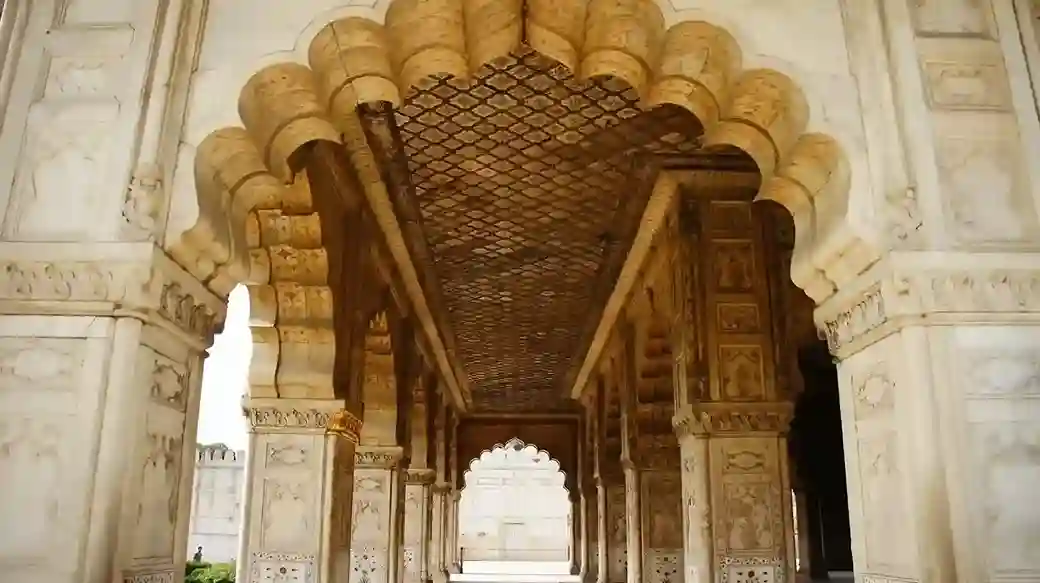
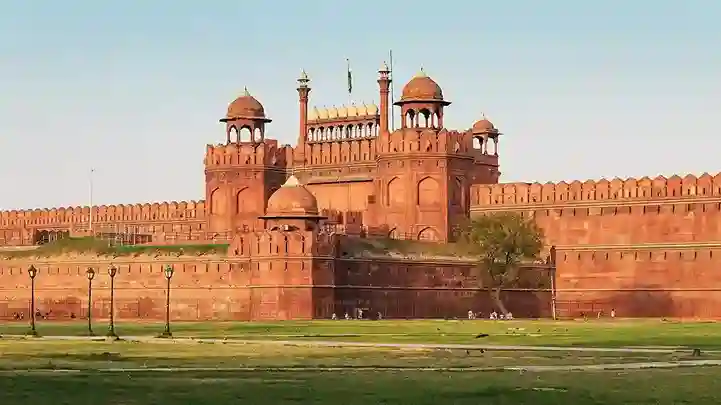
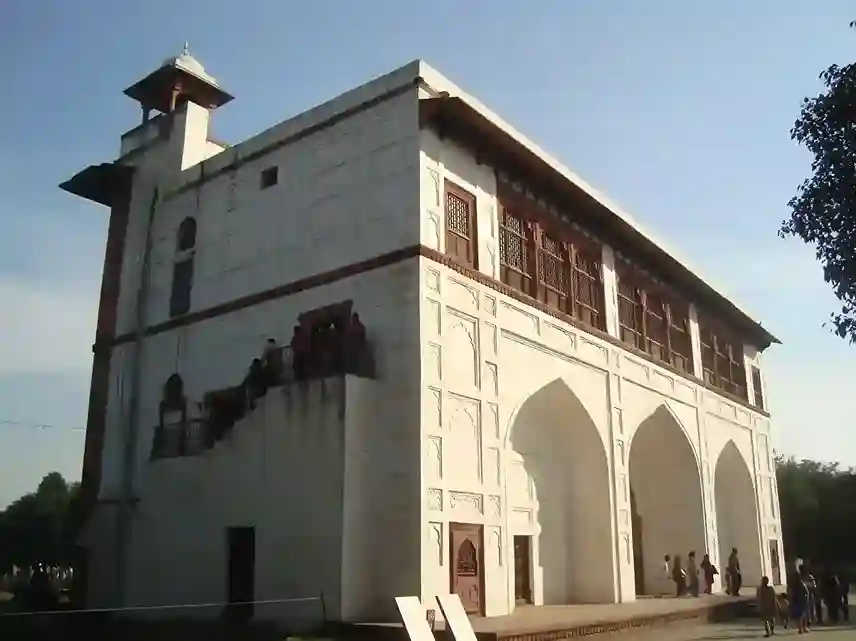
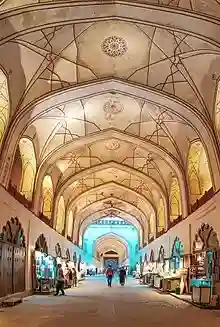
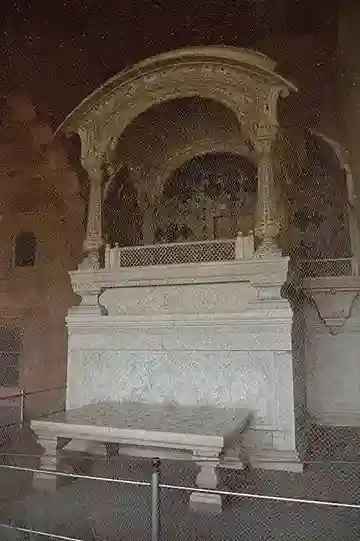
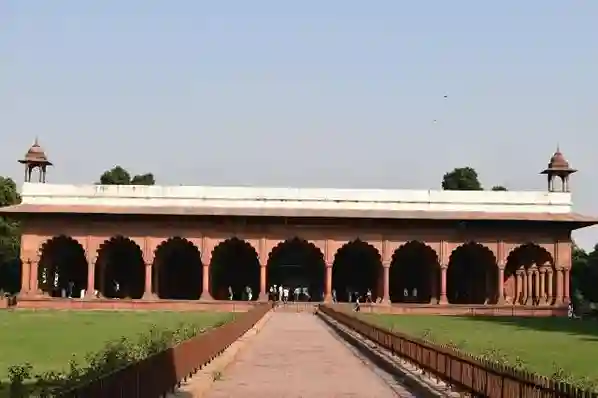
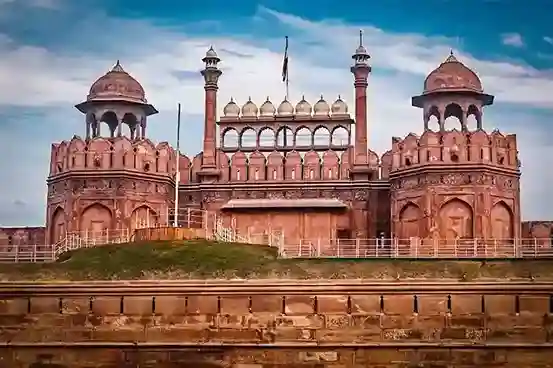
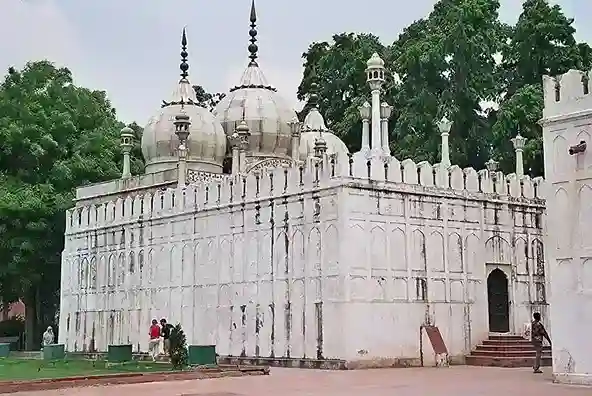
Facilities At Red Fort/Lal Qila
- Information Center
- Restrooms
- Drinking Water Facility
- Cafeteria/Refreshment Stalls
- Souvenir Shops
- Wheelchair Accessibility
- Parking
- Audio Guide
Address Of Red Fort/Lal Qila
The Red Fort or Lal Qila is situated at Netaji Subhash Marg, Chandani Chowk, New Delhi, Delhi.
How To Reach Red Fort/Lal Qila
Red Fort is situated at Netaji Subhash Marg, Chandni Chowk, New Delhi. It easily accessible from all parts of the city. You can reach here by the following modes of transport:
By Metro: The Nearest Metro Station to Red Fort is Lal Qila Metro Station on Violet Line which is 200m away from the Red Fort. From there, you can walk to the Fort.
By Bus: The nearest Bus Stop to Red Fort is Red Fort Bus Stop which is 400m away from the Lal Qila. From there, you can walk to the Fort. You can reach the Bus Stop by Bus route no. 101A, 104, 118 EXT, 164, 171, 172, 185, 210, 213, 215, 216 ACL, 347, etc.
By Cab/Autorickshaw: You can easily book a cab/Autorickshaw to the Lal Qila.
By Personal Vehicle: You can easily come with your personal vehicle.
Parking Facility At Red Fort/Lal Qila
Parking facility is availaible at the Red Fort.
Website Of Red Fort/Lal Qila
The official website of Red Fort is Delhi Tourism
Contact Number Of Red Fort/Lal Qila
You can contact Red Fort Delhi at 011 2327 7705
Places To Visit Near Red Fort/Lal Qila
Top attractions to visit near Red Fort/Lal Qila:
- Shri Gauri Shankar Mandir (350 m)
- Gurudwara Sis Ganj Sahib (650 m)
- St. Mary’s Catholic Church (700 m)
- Jama Masjid (1.2 Km)
- Chandni Chowk (1.4 Km)
- Haveli Mirza Ghalib (1.5 Km)
- Shankar’s International Dolls Museum (3.6 Km)
- Agrasen Ki Baoli (4.4 Km)
- Jantar Mantar (4.8 Km)
- Museum of Illusions (4.8 Km)
- India Gate (5.8 Km)
- National Museum (6.2 Km)
- Purana Qila (6.2 Km)
- Delhi Zoo (6.3 Km)
- Gurudwara Sri Bangla Sahib (6.6 Km)
- Sunder Nursery (6.8 Km)
- National Gallery of Modern Art (6.9 Km)
- Birla Mandir (7.2 Km)
- Humayun’s Tomb (7.7 Km)
- Waste to Wonder Park (7.9 Km)
- Akshardham (8.1 Km)
- EOD Adventure Park (8.9 Km)
- Lodhi Garden (9 Km)
People Also Read
- Worlds Of Wonder Noida
- Waste To Wonder Park Delhi
- Lotus Temple Delhi
- Akshardham Temple Delhi
- EOD Adventure Park
- Atlantic Water World Delhi
- 5 Best Amusement Parks in Delhi NCR
- 25 Exciting Places to visit in Delhi
- Best Places to visit in Delhi For Free
- 5 Best Amusement Park in Delhi NCR
- 5 Hidden Places in Delhi NCR
- Cheap Places to visit in Delhi
Location Map Of Red Fort/Lal Qila
FAQs
Which Days are Red Fort Open on?
Red Fort is open whole week (except sunday) from 9:30 AM to 4:30 PM.
What is the ticket price of Red Fort Delhi?
The Entry fees of Red Fort for Indians is Rs 35 & for Foreigners is Rs 550.
What is the right time to visit Lal Qila Delhi?
The best time to visit Red Fort is during the winter season (september to February) when weather is pleasant.
How time is Enough for Red Fort Delhi?
It might take around 3-4 hours to completely visit Red Fort Delhi.
Is Food allowed inside Red Fort Delhi?
No, you can’t carry food inside the Red Fort Delhi.
Is Mobile Phone allowed inside Lal Qila Delhi?
No, Mobile Phone is not allowed inside Red Fort Delhi.
Is Red Fort good for couple?
Yes, couple can have a good time at Lal Qila Delhi.
How much is the timings of Light & sound show at Red Fort Delhi?
It is a 60 minute show which tells about the history of this iconic monument to life with the help of live actors. The show narrates the stories and legends associated with the fort through a combination of lights, sound effects and narration.
What is the ticket price of Light & Sound show Red Fort Delhi?
The Ticket price of Light & Sound Show for Adults on weekday is Rs 60 & on weekend is Rs 80. The Ticket price of Light & Sound Show for Children on weekday is Rs 20 & on weekend is Rs 30.
Is Light & Sound Show of Red Fort worth visiting?
Yes, Light & Sound show at Red Fort is totally worth visiting.
Which is the Nearest Metro station to Red Fort Delhi?
The Nearest Metro Station to Red Fort is Lal Qila Metro Station on Violet Line which is 200m away from the Red Fort.
Is Parking Facility available at Red Fort Delhi?
Yes, there is a parking facility available at Red Fort Delhi.
What is the opening & closing time of Red Fort?
The opening time of Red Fort is 9:30 AM and its closing time is 4:30 PM.


